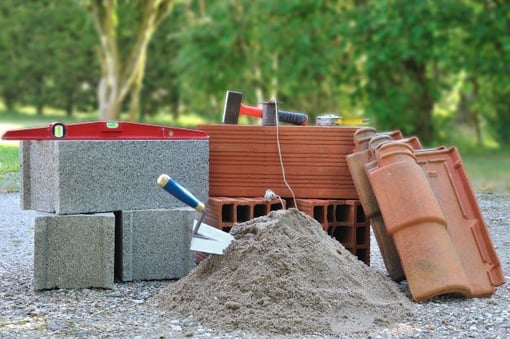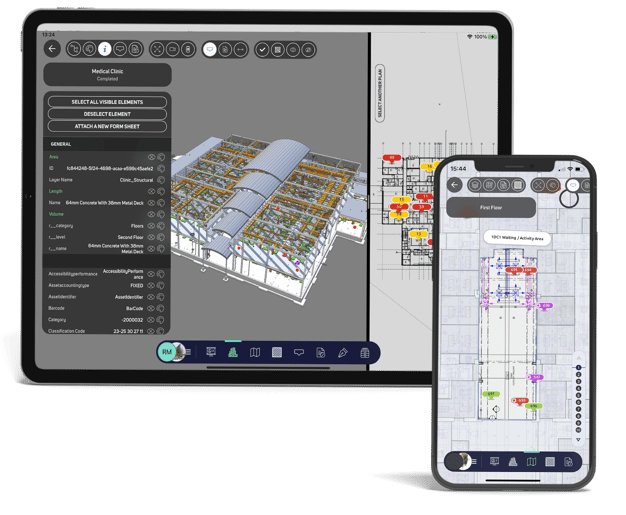Published on
The circular economy in renovation: deconstructing better to rebuild after, thanks to digital tools

According to the Ministry of Ecological Transition, the building sector accounts for about 19% of waste production in the wider civil engineering and construction industry. That translates to nearly 46m tons of waste a year. On average, 49% of waste is generated by building demolition, 38% by their renovation and 13% by new builds. The construction sector is a heavy polluter then, and when it comes to renovation, it is vital to apply the principle of the circular economy. In other words, goods must be produced sustainably, while making more sparing, less wasteful use of resources and limiting waste production. Since the RE2022 (Environmental Regulation 2022) came into force, building better has become more commonplace. Now, equal store must be set by deconstructing better. And there are effective, innovative digital tools available to help achieve that aim. Find out more.
Conduct a digital assessment to identify which materials can be recovered, reused and recycled
The concept of circular economy has been at the top of the agenda since 2015. Indeed, this method has become a national target to be attained and is one of the sustainable development pillars. Specifically, this concept addresses three different aims.
- Produce goods and services in a sustainable manner.
- Make more sparing, less wasteful use of resources.
- Reduce waste production.
Rather than working according to a system whereby goods are produced, used then thrown away, we need to be championing a more circular economic model. The goals in this case are to better safeguard resources, the environment and our health. The implications of the circular economy are at once social, economic and environmental.
All activity sectors are concerned and action is possible in different ways. For example, by:
- opting for a sustainable supply process;
- embracing eco-design;
- adopting responsible consumption practices;
- extending the service life of products, etc.
In the construction sector, the circular economy can be applied when renovating buildings. In practice, appropriate digital tools can be used to pinpoint materials that are in good condition and can be reused for building renovation.
 Optimise building deconstruction thanks to digital tools
Optimise building deconstruction thanks to digital tools
Building deconstruction can be optimised by harnessing digital technology. There are effective digital tools available for teams to use to identify all of the materials in a building and map them on plans as well as the BIM model. This new working method also makes it possible to group materials according to their purpose and assess the quantity of materials intended for recovery or recycling so that they can be reused.

When aiming to deconstruct better so as to subsequently rebuild, in a circular economy mindset, teams have an array of options open to them. Depending on the materials, deconstruction can involve very specific business processes or procedures to ensure worker safety and optimise material reuse. Digital forms then allow teams to ensure that they are following each step, step by step.
-MOBILE%20(FR).jpg?width=507&name=PRODUCTS-FORMS%20(1)-MOBILE%20(FR).jpg)
They can also use some materials for projects in the same group and define circular economy objectives within the organisation. Lastly, depending on the intended purpose of materials, there are economic benefits to recovering, reusing and recycling them particularly thanks to batiRIM, a mobile and collaborative digital solution for the circular economy.
Organise material flows to reduce their carbon footprint
According to an information report by the French Senate, heavy goods vehicles are responsible for 23% of greenhouse gas emissions in the transport sector. Traffic flows therefore heavily impact the environment. These disastrous environmental repercussions aside, freight transport also causes noise pollution, traffic congestion, damage to road surfaces and even accidents.
Fortunately, there are various ways in which the construction sector can effectively act to reduce all of these harmful effects. One solution is to take advantage of appropriate digital tools to accurately forecast all of the material and human resources required to transport the materials to the next destination. It is also possible to adopt digital tools to better plan and manage transport journeys between the building site and the destination to reduce not only waiting time at the site but also unnecessary CO2 emissions.
On a final note, on-site teams can also track flows to analyse them and draw constructive conclusions. This will make it easier to learn from each project and to continually improve them by better organising material flows to lower their carbon footprint.
As you can see, the principles of the circular economy can be applied more effortlessly in renovation thanks to digital tools, which thus allow you to deconstruct better to rebuild after. And that’s not all: why not also opt to work together in a multi-project framework to reuse materials between different building sites? This is an effective way to produce less waste and to give a second life to all the components that can be reused in building renovation projects.
 The circular economy in renovation: everything you need to know
The circular economy in renovation: everything you need to know
What is the circular economy ?
The circular economy refers to the sustainable production of goods and services, with more sparing resource use and less waste production. This commitment to recycling materials helps to reduce both natural resource use and CO2 emissions.
How can the principles of the circular economy be applied in building renovation projects ?
The principles of the circular economy are easier to apply in building renovation projects if you take advantage of digital tools capable of :
- optimising building deconstruction ;
- better organising on-site traffic flows, etc.
What are the objectives of the circular economy in the construction sector ?
The objectives of the circular economy in the construction sector are to recycle materials, limit wasteful resource use and produce less waste.

